
So far the day had gone quite well. We had an excellent breakfast in Moncks Corner. We had discovered some old plantation ruins and a cursed tree and survived to tell the tale. However, time was running out on our adventure. We had been cheating the weather that was flooding the rest of the state, and the radar was looking pretty bleak.
It was time to initiate some serious gris gris to ward off the curse of the Robintation Tree. We started with our own LCU version of communion – bratwurst and sauerkraut served with home brewed beer for lunch. Instead of the banks of a river, this time we had a true tailgate lunch in the parking lot of the Childsbury Heritage Preserve parking area.
We were right next to Strawberry Chapel, possibly one of the oldest buildings in the state. Built in 1725, it has survived 289 years in this location. Unfortunately, there has been much vandalism of both the cemetery and church. A fence surrounds the grounds, and surveillance cameras ring the site.
As if touching a cursed tree were not bad enough, we trespassed. We briefly entered the grounds to get a better angle for camera shots, and to pay our respects at the plot for the Ball family, owners of Comingtee Plantation which we had visited earlier in the day.
On the grave of Elias Ball there were three tea light candles. I don’t know if this was a sign of respect, or more root doctor action going on.
Normally I would have explored the grounds further, looking for interesting funerary art and stonemasons’ signature stones. However, I didn’t wont to trespass any more than we had. I do want to come back for one of the four services that are held here throughout the year.
One of the strangest tales of Strawberry Chapel is that of Catherine Chicken. She was the granddaughter of James Child, who founded the town of Childsbury in 1707. “Little Mistress Chicken,” who was seven at the time, wandered away from the local school, invoking the wrath of the schoolmaster, a Monsieur Dutarque. As punishment, Dutarque tied Catherine to a headstone in the cemetery, forcing her to stay there throughout the night. A slave heard her cries, and she was rescued, cold and unconscious by the time they got to her. Dutarque was run out of town, and Catherine Chicken suffered mental anguish throughout her life as a result of the experience. When she died she was buried at Pompeii Hill, but it is said that her spirit returns to the Strawberry Cemetery.
Let me be very clear here. I do not intend to promote trespassing on the site. It is a sensitive area, and needs to be protected. This location is a treasure, and it would be a shame to see anything happen to it. It is our intent to treat these areas with respect, but we realize some don’t care for these treasures. On the blog post describing my last visit to the chapel back in June I had an extensive comment describing some of the vandalism that has taken place, with a request to report such activity to the Berkeley County Sheriff Department.
As for the town itself, Childsbury was one of the earliest settlements outside of Charleston. It was located on a bluff overlooking the Cooper River, at the furthest navigable point for most boats at that time. According to information on the SC DNR website for this location…
The area has been described as the “apex for commerce along the Cooper River.” As such, it is an important site for interpreting early contact between Native Americans, African Americans and Euro Americans. Significant features include a ferry landing, shipwrecks, homes, a tavern to serve the ferry, a racetrack, a free school and a general store. Numerous tradesmen, including carpenters, butchers, a tanner, shoemaker and doctor were present on the site. The adjacent chapel and tavern continued in use after 1750 and fairs were held until the mid-1750’s.
Historian Henry A. M. Smith published several articles, including a book about the area in the early 1900s. In his book “Some Forgotten Towns of Lower South Carolina” he describes the layout of the town, and includes a town plat from the time of its establishment:
I took the plat and used it as an overlay in Google Earth. I think things matched up very closely with the location of the church and the outline of the river. This shows the extent of the planned town. Whether or not it ever reached those extents is a question for archeology.
As the plantations increased, the town decreased. Eventually the town declined to the point that it didn’t exist at all.
We walked along the road down to the river. There is a good sized dock. I’m not sure if it can be used for fishing, or as an actual dock. Regardless, there were excellent views of the river from here.
If the plat is correct, just north of this dock was the location of the old Strawberry Ferry. I suspect, though, that it was right where we were. There have been several documented shipwrecks in these waters. These have been included as part of an “Underwater Heritage Trail” complete with underwater signage and plaques for divers.
After wandering around the area a bit, we regrouped at our vehicles. We had a couple more stops before we departed. We drove back out to Comingtee Plantation Road and drove north until we reached Taveau Church, another place Laura and had visited.
According to its listing on the National Register of Historic Places, Taveau Church “was constructed ca. 1835 for Martha Caroline Swinton Taveau, on lands of the former Clermont Plantation. After her death in 1847, a black Methodist congregation used the church. In the 1930s Clermont Plantation became part of the larger Mepkin Plantation and the owners of Mepkin, the Luce family, donated the church to the Taveau Methodist Church congregation.”
We wandered around the grounds of the church, taking photos from various angles. The church is in bad repair. The small steeple is on the verge of collapse, and several bits of the roof are missing.
There was a missing window pane, and I was able to lift my camera high enough for a shot of the interior.
The last time I was here I was surprised to see several somewhat modern graves. There were a few unusual additions to the headstones, and it looked like one interment had taken place fairly recently. There was a heart-shaped styrofoam form that held wilted roses.
Just up from Taveau is the entrance to Mepkin Abbey. The abbey is a Trappist Monastery founded in 1949 on the grounds of the former Mepkin Plantation, which had originally been owned by Henry Laurens, and later by the Luce Family.
We pulled in and drove up to the store/visitor’s center. There we got some information about the grounds and where we might visit, then browsed the store. Several of the guys bought shiitake mushrooms that are produced on the grounds. There were other jams and jellies available as well as religious books and articles.
We pulled the vehicles around the the garden parking area. The first thing we spotted were the spectacular wood sculptures that Wanda the waitress told us about when we had breakfast. These were carved from large trees that had blown over during Hurricane Hugo. One sculpture showed the Flight to Egypt, and the other was of The Crucifixion.
The gardens were well tended, although there was nothing in bloom. The grounds are situated with beautiful views of the Cooper River. Two small ponds are ringed with camellias and other flowering plants. The overall feeling was that of peace, which would be appropriate for a monastery.
Just above the ponds on the edge of the garden was the family plot for the Luce family. Buried here are Henry Luce, publisher of Time, Life, and Fortune magazines, and his wife, Clare Boothe Luce, an author, Congresswoman, and ambassador to to Italy.
A clearing on the other side of the parking area marks the location of the manor home of Henry Laurens. Down a small gulley and across a stream, the Laurens family cemetery can be found at the top of the next hill over.
We were really pushing our luck with the weather, but we had one more sacred place to visit. Continuing back toward Moncks Corner, we stopped at the ruins of Biggin Church. Biggin Church was established in 1706 as the parish church of St. John’s Parish. During the Revolutionary War the British stored explosives in the church, and set the church afire upon their departure. The church was rebuilt, and burned down several more times, the last time in the late 1800’s when it was not rebuilt. All that remain are the remnants of walls and the cemetery.
The cemetery is still in active use. We found a couple of unusual graves, including one for a young Georgia fan.
We had cheated the weather long enough, and it was time to go. I had a long trip back to Greenville, and the rest of the guys had a long trip down to Bluffton. We said our goodbyes until next month’s adventure, wherever that might take us.
Here is a slide show of all of the photos from the day’s journey…
[fsg_gallery id=”33″]
…and here are the locations mentioned in this blog post.
View Sacred Places on the Cooper River in a larger map






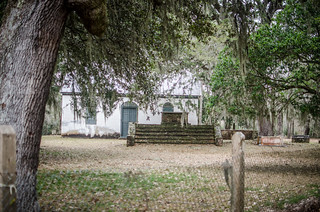



















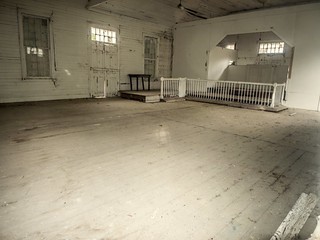









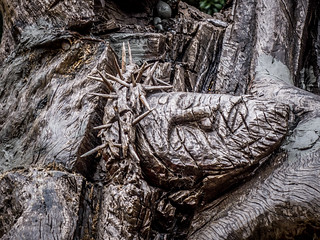



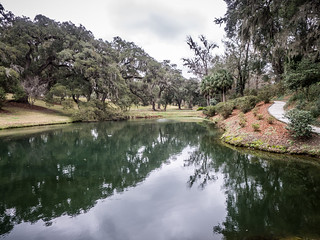



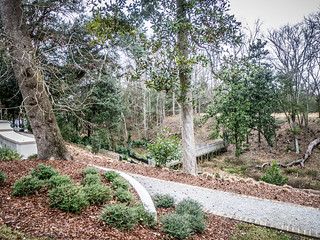











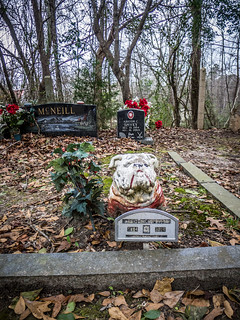
Several of my favorite places on this post. I have passed by Taveau church dozens of times and always say that I’ll stop on the way back but never manage to. I need to do that soon – you’ve inspired me!
Great photos and wonderful musings. Ive visited the Childsbury town many times and am continually intrigued by it,as well as by all the great history and artifacts in this area. Thanks for the wonderful memories !
Id love to keep up with your travels.
This is a really great post! Nice pictures, great history. Wish I lived closer, but may still make the trip from ATL.